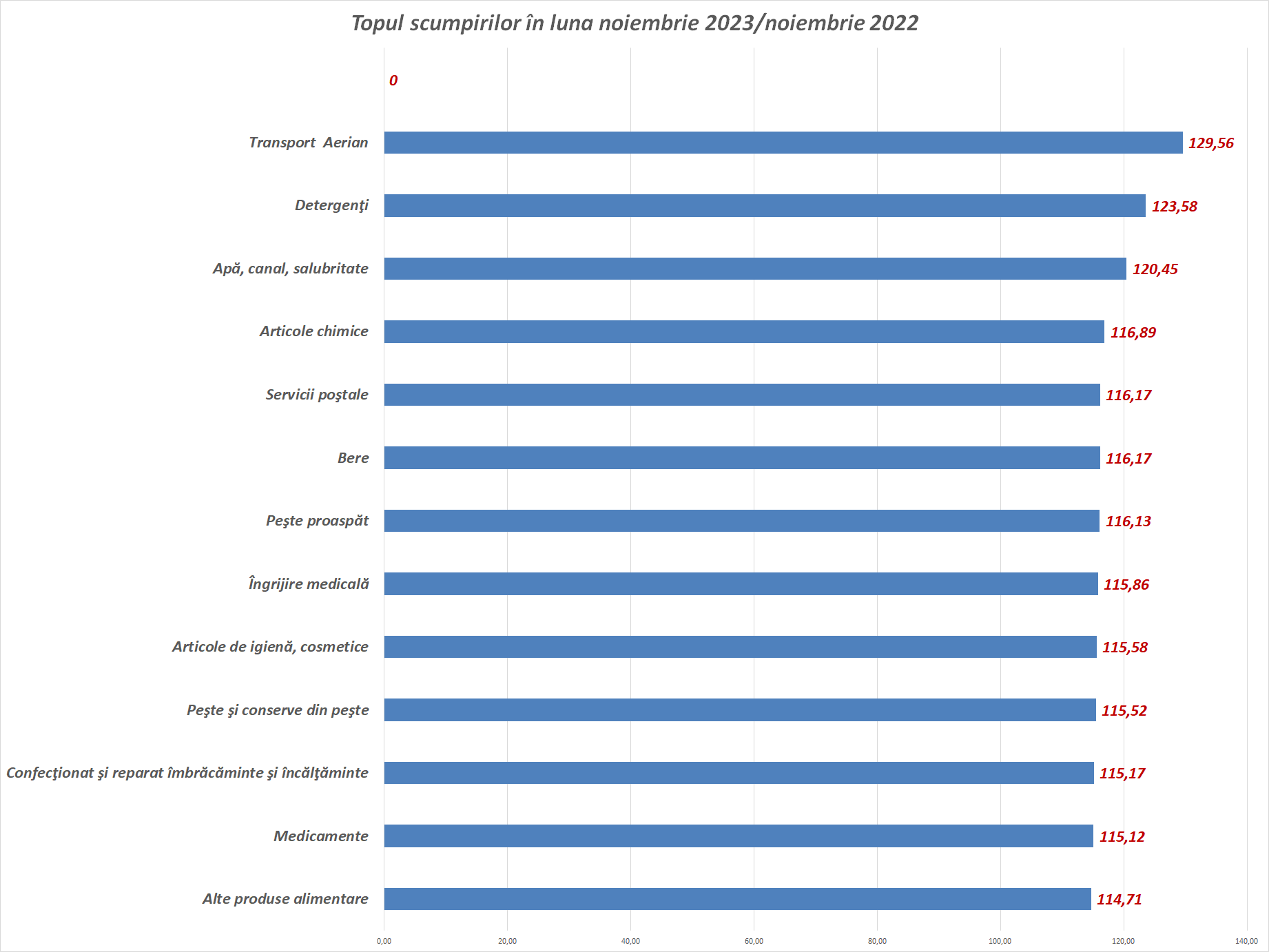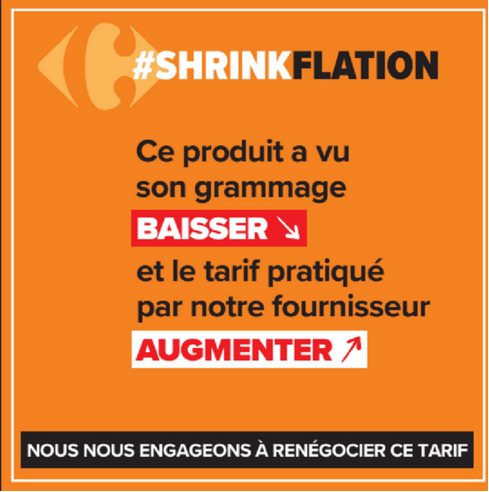
On Wednesday, the INS released data on the rate of price growth (6.7%), down from 8.1% a month earlier. Airfare, cleaning supplies, sanitation and postal services were among the most expensive, according to INS data.
Indeed, inflation is quite difficult to calculate, especially because manufacturers, trying to maintain their profits, change ingredients, reduce quantities or introduce new technologies that change the structure of products.
Skimpflation or compression?
The French press writes about reducing the amount of meat in lasagna, replacing butter with margarine in order to make products cheaper, but maintaining prices.

“From my observations, skimpflation (reducing the quality of a product or service so that it can continue to be profitable) has manifested itself in the Romanian market more than shrinkflation. It is more difficult to notice weight loss on one side.
On the other hand, I don’t know how many carefully read food labels to see how much meat cold cuts contain. Or see that some products use palm oil instead of sunflower oil. Or sweeteners instead of sugar. And this is another way for manufacturers to keep their profits,” INS representatives explained in a conversation with HotNews.
From September 2023, Carrefour informs its Belgian and French customers of products whose quantities have decreased but prices have remained unchanged or even increased (reduced inflation). These goods are marked with the inscription “Ce produit a vu son contenant baisser et son prix augmenter” (“This product has decreased in quantity, but the price has increased). This applies to coffee as well as chips, mayonnaise or drinks. The degree of price increase will also be indicated.

Carrefour’s initiative is in response to a request from the French government, which is outraged that large retailers are able to mask price increases by reducing weight or substituting cheaper ingredients. In France, consumer protection associations took a stand and condemned these deceptive practices.
“To fulfill its promise to keep the price of vegetables at €0.99, Carrefour switched from a three-salad pack to a two-salad pack,” he explains. Similarly, bags of potatoes, reduced “from 1.5 kg to 1 kg.”
According to the retailer, the “hidden inflation” affects about 150 of the “10,000, 20,000, 30,000” items we find on the shelves.
Products that leave the list and others enter
At the end of each year, several people at the National Institute of Statistics get together and decide which products to remove or which new products to add to the inflation accounting list. This year, 42 new products were introduced and 61 were released.
Sometime in October, discussions begin, and everything is decided in December, so the new list for 2023 provided for the inclusion of 16 new food products, 16 non-food products and 10 new types of services. 12 food products, 29 non-food products and 20 services were removed from the list.
The National Institute of Statistics, with the help of 112 employees, collects about 150,000 prices from 7,000 shops and markets every month.
For those unfamiliar with the calculation of the price increases we all see, the National Institute of Statistics collects around 150,000 prices from 7,000 shops and agri-food markets every month with the help of 112 staff. Statisticians consider products that are relevant to consumption, and their shares in consumption are calculated on the basis of household budget research.
But over time, some products become irrelevant for consumption and must be removed from the list, while others appear and are successfully sold, becoming relevant. There are also products where the product remains but has new features and new technologies.
Last year, for example, included a robot vacuum cleaner whose sales surged during the pandemic, making it relevant. Also, in recent years, non-alcoholic beer and organic eggs have been included in the list of products included in the consumer basket, although it is not only about products.
The year 2023 meant the inclusion of 16 new food products, 16 non-food products and 10 new types of services.
This year, 12 food products, 29 non-food products and 20 services were excluded. Information about the assortments included in the list is confidential because it contains characteristics such as brand, manufacturer, model or type.
Society changes and so do the services they offer. For example, self-service laundries are a new and relevant service. And among the less relevant, we have electrical workshops.
We wanted to introduce robot vacuum cleaners to the list two years ago. They just didn’t sell it that way
We have a stage somewhere at the end of each year, a stage that also involves the territory departments that actually collect the prices, where we offer 3 types of offers: new products, modified products or products that need to be phased out. Followed by reviews of colleagues from 42 districts. They are the ones who analyze and look at the market to find the products that are offered to determine the places where they are sold… For example, robot vacuum cleaners. We wanted to introduce them two years ago. They just didn’t sell it like it is now. Of course, there was also a pandemic period, but it is certain that we included it in the list only last year, becoming an increasingly used and popular product, INS representatives explain.
Criteria that add or remove a product from the list
We have such a criterion of direct observation. From the articles, from the study of online sales, we also see new products that appear. But we do not post the product immediately after it appears. This product should be available for sale in most, if not all, countries. If the product is sold only in 2-3 district capitals, we do not include it. Therefore, feedback from the territory is very important.
Then statisticians from county departments come in with offers based on store visits. When they see that the product has changed its characteristics or is no longer found, they send these observations to the Central INS. After this exchange of proposals, an INS-level analysis group is established to meet, analyze and decide on the final list of food, non-food goods and services that remain on the list, which is the basis for calculating inflation. .
Source: Hot News
Lori Barajas is an accomplished journalist, known for her insightful and thought-provoking writing on economy. She currently works as a writer at 247 news reel. With a passion for understanding the economy, Lori’s writing delves deep into the financial issues that matter most, providing readers with a unique perspective on current events.